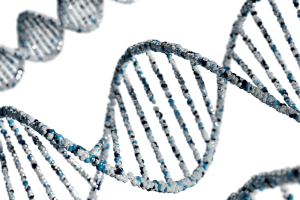We are pleased to introduce Dr Michael (Mike) Poidinger, Phenomics Australia Board member and Chair of the Data Integrity Committee. He has over 20 years of experience in the management and analysis of biological and biomedical data and has worked in academic, government, and commercial settings working on integrated core systems to enable biodiscovery in Australia, the UK, Singapore, and the USA. He spent 10 years as a principal investigator in bioinformatics at the Singapore Immunology Network and has worked as the Research Data Manager for the Murdoch Children’s Research institute.
Five questions with Mike Poidinger: an interview with Phenomics Australia Data Integrity Committee Chair
1. What sparked your initial interest in science and research?
I have had an interest in biology and computing since I was a child and always knew I’d work in one of those fields, but at the time didn’t realise it would be both. I was accepted into Medicine out of school, but after brief reflection realised it wasn’t for me, and instead did a biology-based degree, and stayed in the field from there.
2. Can you explain in simple terms what biological and biomedical data are?
In simple terms, it’s the measurement and observations of organisms or parts of them.

It stopped being simple when ‘omics technologies arose allowing us to take thousands, even 10’s of thousands, of measurements of anything from an organism to a single cell. Each new technology spawns increasing complexity in how to analyse all of these measurements to generate information from the data
3. What are the major challenges and opportunities that infrastructure providers face when managing biological and biomedical data?
Our ability to generate data outstrips Moore’s Law, which means we generate data faster than computers get better. A dataset now can contain a petabyte of complex data, so the challenge and opportunity is finding ways to store, transmit, catalogue, share and analyse the data. I am involved in a large project in which 2 institutions separated by less than a kilometre transfer data by someone walking between the buildings with a hard drive. We can and should do better.
4. What is F.A.I.R. data, and what role do you see it will have in shaping the future of healthcare?
FAIR stands for Findable, Accessible, Interoperable and Reusable. To put it in a sentence: We need scientists to be able to find existing data relevant to their research and be able to retrieve it in a format that they can (re)use. Having the wealth of health and biomedical data available in such a way would revolutionise healthcare advances in a similar way google did for our ability to access information from around the world. Imagine if there was a search engine where the query “what transcriptomic datasets are available for the effect of LPS on monocytes from diabetic children with sepsis”, and returned not only links to the papers, but also the underlying datasets in formats immediately ready for analysis.
5. If you had pursued a different career path outside of science, what would it have been?
Does software engineering count as outside of science? If I had not gone into biology I would have gone into coding, which I spent some time in anyway. Biology always dragged me back.







